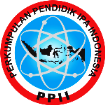Description Students' Misconceptions about the Concept of Motion in Sambas: Post Covid-19
Abstract
This study aims to provide an overview of the misconceptions of 10th-grade high school students in the Sambas district on the concept of motion during a pandemic which is an evaluation of the teaching and learning process of physics during the pandemic (Covid-19). The method used in this study is a survey method with descriptive data analysis with the subject or sample in this study of as many as 223 10th-grade students, consisting of 4 schools with cluster sampling. Based on the data analysis, it can be concluded that the students' misconceptions are still experiencing confusion. If two objects have the same position, they should have the same velocity; and if the two objects have the same velocity, the student assumed that these two objects must have the same acceleration or vice versa. However, students are able to distinguish which ones are scalar quantities and which are vector quantities. As for impetus material, students assume that if an object has a motion, it must have a force acting upon this object. This is a contradiction with newton's first law. Also, it is believed that if the object moves in a circular path, a circular (impetus) force tends to move this object in its path. The highest misconception is in the concept of kinematic about velocity-position and concept of impetus. There is no different in student misconception before and after pandemic covid-19 so that in the future it still needs to improve physisc learning process and physics teacher competence to prevention student misconception.
Keywords: misconception, motion, post-covid19
Full Text:
PDFReferences
Anugrahana, A. (2020). Hambatan, solusi dan harapan: pembelajaran daring selama masa pandemi covid-19 oleh guru sekolah dasar. Scholaria: Jurnal Pendidikan Dan Kebudayaan, 10(3), 282–289. https://doi.org/https://doi.org/10.24246/j.js.2020.v10.i3.p282-289
Azman, N. F., Alia, M., & Mohtara, L. E. (2013). The Level of Misconceptions on Force and Motion Among Physics Pre-service Teachers in UPSI. Universiti Teknologi Malaysia.
Bayraktar, S. (2009). Misconceptions of Turkish pre-service teachers about force and motion. International Journal of Science and Mathematics Education, 7, 273–291. https://doi.org/https://doi.org/10.1007/s10763-007-9120-9
Demirci, N. (2005). A Study about Students’ Misconceptions in Force and Motion Concepts by Incorporating a Web-Assisted Physics Program. Turkish Online Journal of Educational Technology-TOJET, 4(3), 40–48.
Dewi, W. A. F. (2020). Dampak Covid-19 terhadap implementasi pembelajaran daring di Sekolah Dasar. Edukatif: Jurnal Ilmu Pendidikan, 2(1), 55–61. https://doi.org/https://doi.org/10.31004/edukatif.v2i1.89
DiSessa, A. A. (1988). Knowledge in pieces.
Galili, I., & Bar, V. (1992). Motion implies force: where to expect vestiges of the misconception? International Journal of Science Education, 14(1), 63–81. https://doi.org/https://doi.org/10.1080/0950069920140107
Hammer, D. (2000). Student resources for learning introductory physics. American Journal of Physics, 68(S1), S52--S59. https://doi.org/https://doi.org/10.1119/1.19520
Hestenes, D., Wells, M., & Swackhamer, G. (1992). Force concept inventory. The Physics Teacher, 30(3), 141–158.
Kozhevnikov, M., & Hegarty, M. (2001). Impetus beliefs as default heuristics: Dissociation between explicit and implicit knowledge about motion. Psychonomic Bulletin & Review, 8, 439–453. https://doi.org/https://doi.org/10.3758/BF03196179
Kuczmann, I. (2017). The structure of knowledge and students’ misconceptions in physics. 050001. https://doi.org/10.1063/1.5017454
Maloney, D. P. (1994). Research on problem solving: Physics. Handbook of Research on Science Teaching and Learning, 327–354.
Matthews, M. R., Gauld, C. F., & Stinner, A. (2005). The pendulum: Scientific, historical, philosophical and educational perspectives. Springer Science & Business Media.
Nafrin, I. A., & Hudaidah, H. (2021). Perkembangan pendidikan Indonesia di masa pandemi COVID-19. Edukatif: Jurnal Ilmu Pendidikan, 3(2), 456–462. https://doi.org/https://doi.org/10.31004/edukatif.v3i2.324
Poutot, G., & Blandin, B. (2015). Exploration of Students’ Misconceptions in Mechanics using the FCI. American Journal of Educational Research, 3(2), 116–120. https://doi.org/10.12691/education-3-2-2
Pujianto, A. (2013). Analisis konsepsi siswa pada konsep kinematika gerak lurus. JPFT (Jurnal Pendidikan Fisika Tadulako Online), 1(1), 16–21.
Rahmawati, D. U., Kuswanto, H., Oktaba, I. A., & others. (2020). Identification of students’ misconception with isomorphic multiple choices test on the force and newton’s law material. Journal of Physics: Conference Series, 1440(1), 12052. https://doi.org/10.1088/1742-6596/1440/1/012052
Resbiantoro, G., & Nugraha, A. W. (2017). Miskonsepsi mahasiswa pada konsep dasar gaya dan gerak untuk sekolah dasar. Jurnal Pendidikan Sains Universitas Muhammadiyah Semarang, 5(2), 80–87. https://doi.org/https://doi.org/10.26714/jps.5.2.2017.80-87
Sari, D. R., Ramdhani, D., & Surtikanti, H. K. (2019). Analysis of elementary school students’ misconception on force and movement concept. Journal of Physics: Conference Series, 1157(2), 22053. https://doi.org/10.1088/1742-6596/1157/2/022053
Savinainen, A., & Scott, P. (2002). The Force Concept Inventory: a tool for monitoring student learning. Physics Education, 37(1), 45. https://doi.org/https://doi.org/10.1119/1.2343497
Sherin, B. (2006). Common sense clarified: The role of intuitive knowledge in physics problem solving. Journal of Research in Science Teaching: The Official Journal of the National Association for Research in Science Teaching, 43(6), 535–555. https://doi.org/https://doi.org/10.1002/tea.20136
Siahaan, M. (2020). Dampak pandemi Covid-19 terhadap dunia pendidikan. Universitas Bhayangkara Jakarta Raya, 20(2).
Suparno, A. (2013). Kontribusi Pelatihan Guru, Iklim Organisasi Dan Persepsi Guru Tentang Keterampilan Manajerial Kepala Sekolah Terhadap Keterampilan Guru Dalam Pembelajaran Smkn Kota Semarang. Publiksi Ilmiah: Varia Pendidikan, 25(1).
Sutopo. (2014). Miskonsepsi pada Optika Geometri dan Remediasinya. Jurnal Peningkatan Kualitas Guru Sekolah Menengah Pertama (J-TEQIP), V(2), 356–368.
Sutrisno, A. D. (2019). Survey pemahaman konsep dan identifikasi miskonsepsi siswa SMA pada materi kinematika gerak. WaPFi (Wahana Pendidikan Fisika), 4(1), 106–112. https://doi.org/https://doi.org/10.17509/wapfi.v4i1.15796
Taqwa, M. R. A., Astalini, A., & Darmaji, D. (2015). Hubungan Gaya Belajar Visual, Auditorial, dan Kinestetik dengan Hasil Belajar Siswa pada Materi Dinamika Rotasi dan Kesetimbangan Benda Tegar Kelas XI IPA SMAN Se-Kota Jambi. Seminar Nasional Universitas Muhammadiyah Purworejo, 220–227.
Tayubi, Y. R. (2005). Identifikasi miskonsepsi pada konsep-konsep fisika menggunakan Certainty of Response Index (CRI). Mimbar Pendidikan, 3(24), 4–9.
Türker, F. (2005). Developing a three-tier test to assess high school students’ misconceptions concerning force and motion. Middle East Technical University.
Widiyatmoko, A., & Shimizu, K. (2018). Literature review of factors contributing to students’ misconceptions in light and optical instruments. International Journal of Environmental and Science Education, 13(10), 853–863.
Wiyono, F. M., Sugiyanto, S., & Yulianti, E. (2016). Identifikasi hasil analisis miskonsepsi gerak menggunakan instrumen diagnostik three tier pada siswa SMP. Jurnal Penelitian Fisika Dan Aplikasinya (JPFA), 6(2), 61–69. https://doi.org/https://doi.org/10.26740/jpfa.v6n2.p61-69
Yolanda, Y. (2016). Remediation of Misconception Momentum and Impulse With 5e Learning Cyvle Approach. Electonic and Mobile Learning International Seminar Proceedings. Postgraduate Program Universitas Negeri Jakarta.
Yolanda, Y. (2017). Remediasi miskonsepsi kinematika gerak lurus dengan pendekatan STAD. SPEJ (Science and Physic Education Journal), 1(1), 39–48. https://doi.org/https://doi.org/10.31539/spej.v1i1.76
DOI: http://dx.doi.org/10.24014/jnsi.v6i2.19250
Refbacks
- There are currently no refbacks.

Journal of Natural Science and Integration
E-ISSN: 2620-5092 P-ISSN: 2620-4967
Published By:
Department of Science Education, Faculty of Education and Teacher Training,
State Islamic University of Sultan Syarif Kasim Riau, Indonesia
Mailing Address:
Jl. H.R Soebrantas Km. 15 No. 155
Kelurahan Simpang Baru
Kecamatan Tuah Madani, Pekanbaru, Riau, Indonesia
Email: jnsi.tadrisipa@uin-suska.ac.id
Indexed By:
Journal of Natural Science and Integration is licensed under a Creative Commons Attribution 4.0 International License.


_-_Copyy2.png)






.jpg)
.png)
.jpg)
.jpg)




